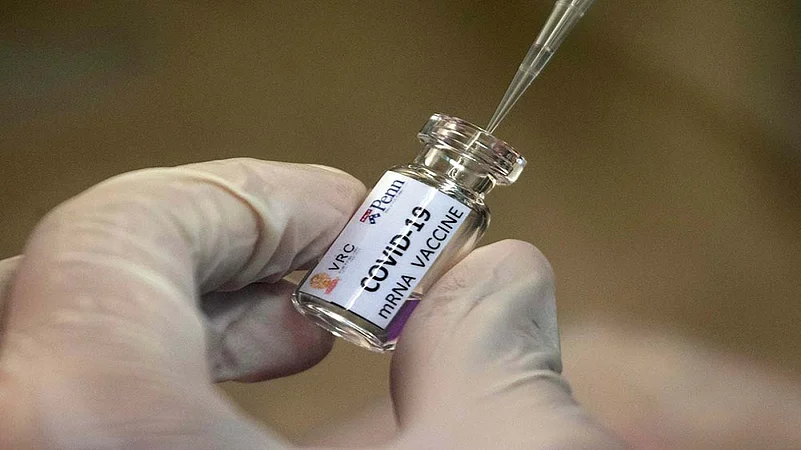It is presumptuous to be writing about what might be the government’s Covid vaccine policy when we are still groping our way around in understanding the full import of the virus. Yet, conversations about it have begun in the media and policy corridors. Given the enormity of the task, such conversations are important in helping us understand the risks and challenges ahead. Early, planned and decisive action can minimise unintended or contrarian outcomes.
Public policy has two aspects—the justification and the implementation, the intent and the form; the cerebral and the concrete that one can grasp. A good policy needs to have clarity on all its four dimensions—its objectives, implementation design, funding and outcomes. Comprehensive information on the efficacy, technical parameters and cost is prerequisite as it has a direct bearing on the policy architecture.
Efficacy is critical. In 2010, at the early stages of the H1N1 outbreak, the vaccine had a poor off-take only because it had a 50% efficacy, resulting in a large number of vaccines lying unused. The struggle against the HIV vaccine has been essentially around low efficacy. An e-survey of about 14,000 respondents showed that over 61% were not keen on a vaccine due to want of information on its utility. Low efficacy does impact acceptability.
For the implementation design to reach the last beneficiary, having complete knowledge of the technical parameters of the vaccine is essential—is it an injectable or oral; the time span of the immunity it offers; the temperature to be maintained for transport and storage; age group-wise dosage requirements and so on. These have huge implications for working out the logistics in terms of the kind of cold chain, with different specifications at different levels; the skill base of the human personnel to ensure proper storage, use, and disposal in accordance with safety standards, and early procurement and stockpiling of the required equipment and consumables.
Alongside, efficacy and feasibility of implementation of a product, the cost is a determinant to its full adoption. Recently, media reported political leaders committing themselves to providing the vaccine free of cost to all. While so, Poonawalla of Serum Institute estimated that such a free-for-all policy may require the government to earmark about Rs 80,000 crores. A working group set up by the Centre is reported to have estimated a requirement of about Rs 50,000 crores. Considering that India’s health budget is about Rs 63,000 crores and considering the negative growth rate, the fiscal implications of earmarking an additional outlay of that magnitude may need serious reprioritisation of expenditures. As it is, the health sector is a funds-starved sector and the pandemic has already had a debilitating impact.
That said, the cost may still be within the range of affordability as experience shows that in bulk procurement prices crash and more so in a competitive environment with many manufacturers. India is very advantageously positioned as the vaccine is indigenously manufactured. Yet, in the event of a foreign vaccine being more efficacious or robust, people may not want to take the indigenous one, even if free or cheaper. On the other hand, imported vaccines are costly and pricing issues can be problematic. In the case of Covid, WHO will have a central role in helping arrive at affordable prices as well as ensure availability.
A related risk is the event of the virus disappearing or mutating, resulting in a measure of complacency or less enthusiasm in the belief that the second generation vaccine may be more efficacious and robust. The potential of a slow demand will necessarily impact on dampening the investments required to scale up manufacturing capacity and the final price. Decisions to add additional capacity to address the needs would depend upon the technical requirements of the vaccine and the perception of people on the one hand and a long-term commitment of the government to procure this vaccine year-on-year on the other.
While manufacturers will look for profit maximisation or covering costs, governments and international bodies like WHO will want to beat down the prices to bare-bone levels. Pricing is tricky, needing careful calibration to ensure industry interest in manufacturing the product on a sustainable basis.
Other important issues that require equal attention is close monitoring. The government has already initiated using electronic platforms for monitoring the cold chain and utilisation. The success of the polio campaign was the substantial investment made in monitoring and data analytics. That experienced got internationalised for the universal immunisation programme and needs to now be further strengthened and expanded for the world’s largest mass vaccination program.
The task is daunting. But then, nothing is impossible if there is early planning, timely decision-making with not too many cooks, and simple, easy-to-understand and implementation guidelines issued with funds and technical support to states. A smooth implementation is possible. India has that capacity.
(Views are personal)
Former Union health secretary and author of Do We Care? India’s Health System
















